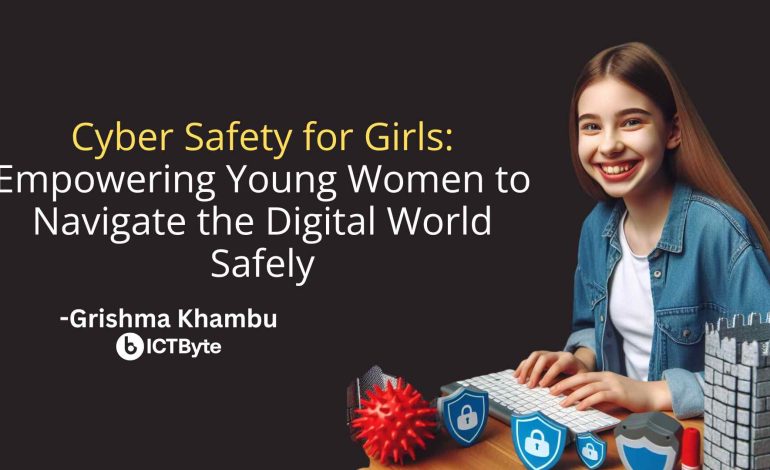
In our digitally interconnected society, the prevalence of online harassment and abuse poses significant challenges, particularly for women, girls, and LGBTQI+ individuals. These vulnerable groups often bear the brunt of technology-facilitated gender-based violence (GBV), experiencing various forms of cyber threats such as online intimidation, cyberstalking, sextortion, and the unauthorized dissemination of intimate imagery.
Understanding the Risks: Cyber Threats Faced by Girls
Online harassment and abuse wield profound consequences, impacting the mental health, education, and professional trajectories of young women. Victims frequently endure debilitating conditions such as post-traumatic stress disorder (PTSD), depression, anxiety, eating disorders, and tragically, even suicidal tendencies. Moreover, they face escalated risks of physical and sexual violence, exacerbating the gravity of the issue.
Cyberstalking: A Persistent Threat
Cyberstalking, characterized by the repetitive use of technology to harass, intimidate, or menace individuals, represents a pernicious form of online abuse. Tactics include monitoring online activities, inundating victims with unwelcome messages or emails, and propagating false accusations or threats. Such conduct inflicts substantial emotional distress and can escalate into physical stalking or violence.
Sextortion: Exploiting Vulnerability
Sextortion, a form of coercion involving threats to disseminate intimate imagery unless demands are met, inflicts severe harm on victims. Blackmailers leverage explicit material to extort additional content, money, or sexual acts, causing emotional trauma, financial loss, and reputational damage.
Non-consensual Distribution of Intimate Images: Violating Trust
The proliferation of non-consensual distribution of intimate images, commonly termed “revenge porn,” entails the unauthorized sharing of explicit content without consent. This egregious violation not only tarnishes victims’ reputations and relationships but also precipitates mental anguish, cyberstalking, and, in some instances, physical violence.
Child Sexual Abuse Material: A Disturbing Trend
The proliferation of child sexual abuse material (CSAM) poses a grave concern, with any depiction of sexually explicit conduct involving minors constituting a criminal offense. The exponential rise in CSAM reports underscores the urgency to combat this reprehensible phenomenon, safeguarding the innocence and dignity of children.
Online Grooming: A Tactic of Predators
Online grooming, a predatory tactic involving the cultivation of relationships with minors to exploit them sexually, necessitates vigilance. Predators exploit social media, gaming platforms, and messaging apps to manipulate victims, often using flattery, gifts, and attention to engender trust and elicit compliance. The insidious nature of online grooming underscores the imperative of preemptive action to thwart potential harm.
Proactive Measures: Promoting Cyber Safety and Digital Literacy
Mitigating online threats necessitates a proactive approach centered on cultivating cyber safety and digital literacy among young women. Key strategies encompass:
Education: Fostering Awareness and Resilience
Empowering girls with knowledge about online threats, privacy management, and secure online conduct is pivotal. Education initiatives should encompass identifying warning signs, responding effectively to abuse, and accessing support resources.
Parental Controls: Establishing Boundaries and Monitoring
Parental control tools enable guardians to oversee and regulate children’s online activities, limiting exposure to harmful content and predatory behavior. Implementing age-appropriate restrictions and monitoring mechanisms bolsters online safety.
Reporting Mechanisms: Advocating for Accountability
Encouraging victims to report online abuse to trusted authorities, including parents, educators, and law enforcement, is essential. Holding perpetrators accountable through legal channels reinforces deterrence and safeguards victims’ rights.
Digital Literacy: Cultivating Critical Thinking
Promoting digital literacy equips young women with the skills to discern credible information, identify online threats, and navigate the digital landscape judiciously. Educating them about cybersecurity, privacy safeguards, and media literacy bolsters resilience against online manipulation.
Legislative Advocacy: Enhancing Legal Protections
Advocating for robust legislation and policies to combat online harassment, cyberstalking, and the dissemination of intimate imagery is imperative. Legal frameworks should criminalize malicious online conduct, ensuring accountability and redress for victims.
Building Resilience: Strengthening Girls Against Online Abuse
Augmenting resilience among girls is paramount to fortify their defenses against online abuse. Key strategies include:
Education and Awareness: Promoting Vigilance and Empowerment
Raising awareness about online risks and empowering girls to assert control over their digital experiences fosters resilience. Educating them about privacy safeguards, healthy relationships, and self-care practices bolsters autonomy and self-advocacy.
Support Networks: Cultivating Trust and Community
Nurturing supportive relationships with parents, mentors, peers, and professionals creates a safety net for girls facing online abuse. Encouraging open dialogue, seeking guidance, and accessing resources fortifies emotional well-being and resilience.
Digital Literacy: Instilling Critical Thinking and Discernment
Embedding critical thinking skills within educational curricula empowers girls to navigate the digital realm adeptly. Equipping them with tools to evaluate online content, detect manipulation, and counter misinformation enhances their resilience against online exploitation.
Advocacy and Action: Amplifying Voices for Change
Empowering girls as advocates for change amplifies their voices in combating online abuse and shaping policy reforms. Providing platforms for activism, promoting inclusive dialogue, and fostering solidarity engenders collective action for a safer digital environment.
Conclusion: Empowering Girls in the Digital Sphere
As we confront the burgeoning challenges of online abuse, empowering young women to navigate the digital world securely is imperative. By fostering cyber safety, digital literacy, and resilience, we can mitigate risks, amplify voices, and effectuate meaningful change. Let us commit to championing the rights and dignity of girls in the digital sphere, safeguarding their well-being and fostering a culture of respect and inclusivity.
Written By: Grishma Khambu
Address: Thimi, Bhaktapur
Email: grishmasht17@gmail.com
College: Himalaya College of Engineering
Faculty: BSc. CSIT
Semester: Eighth





